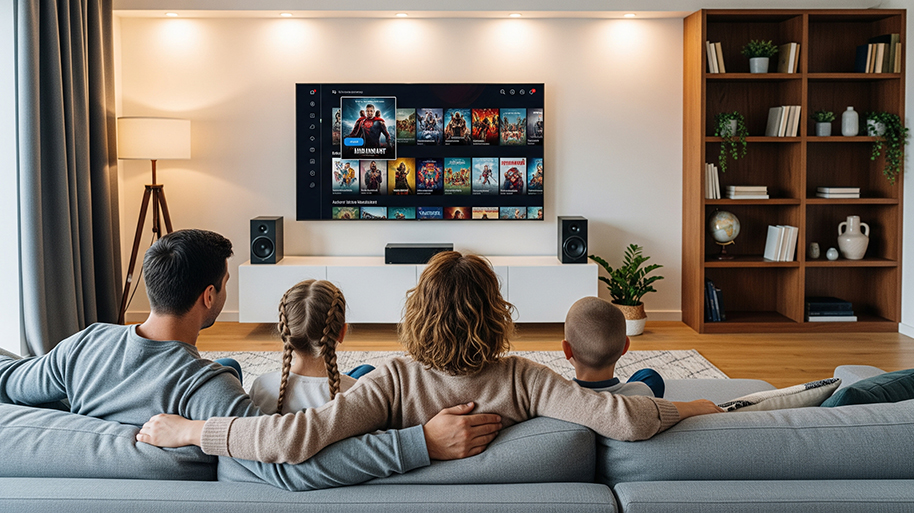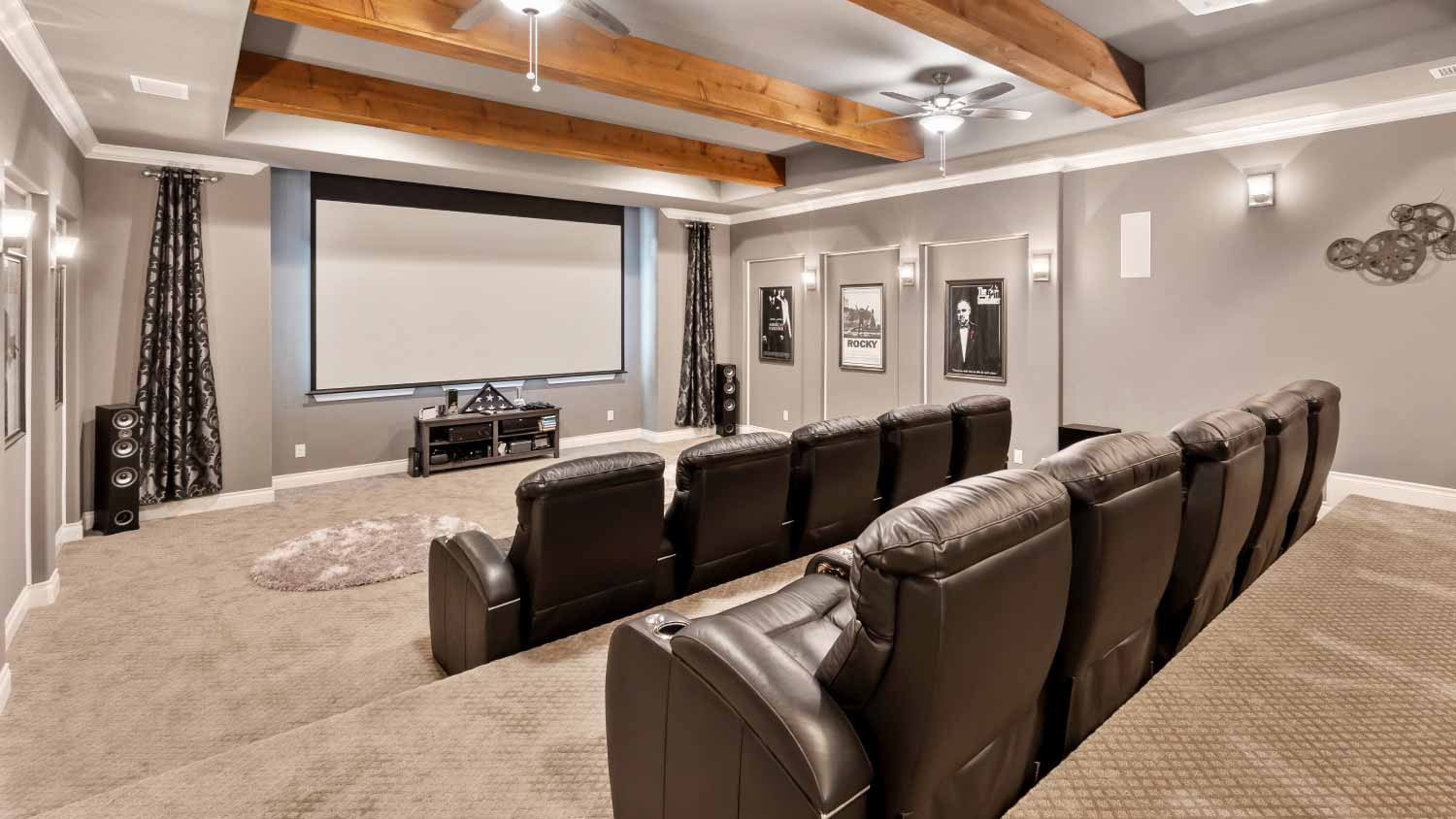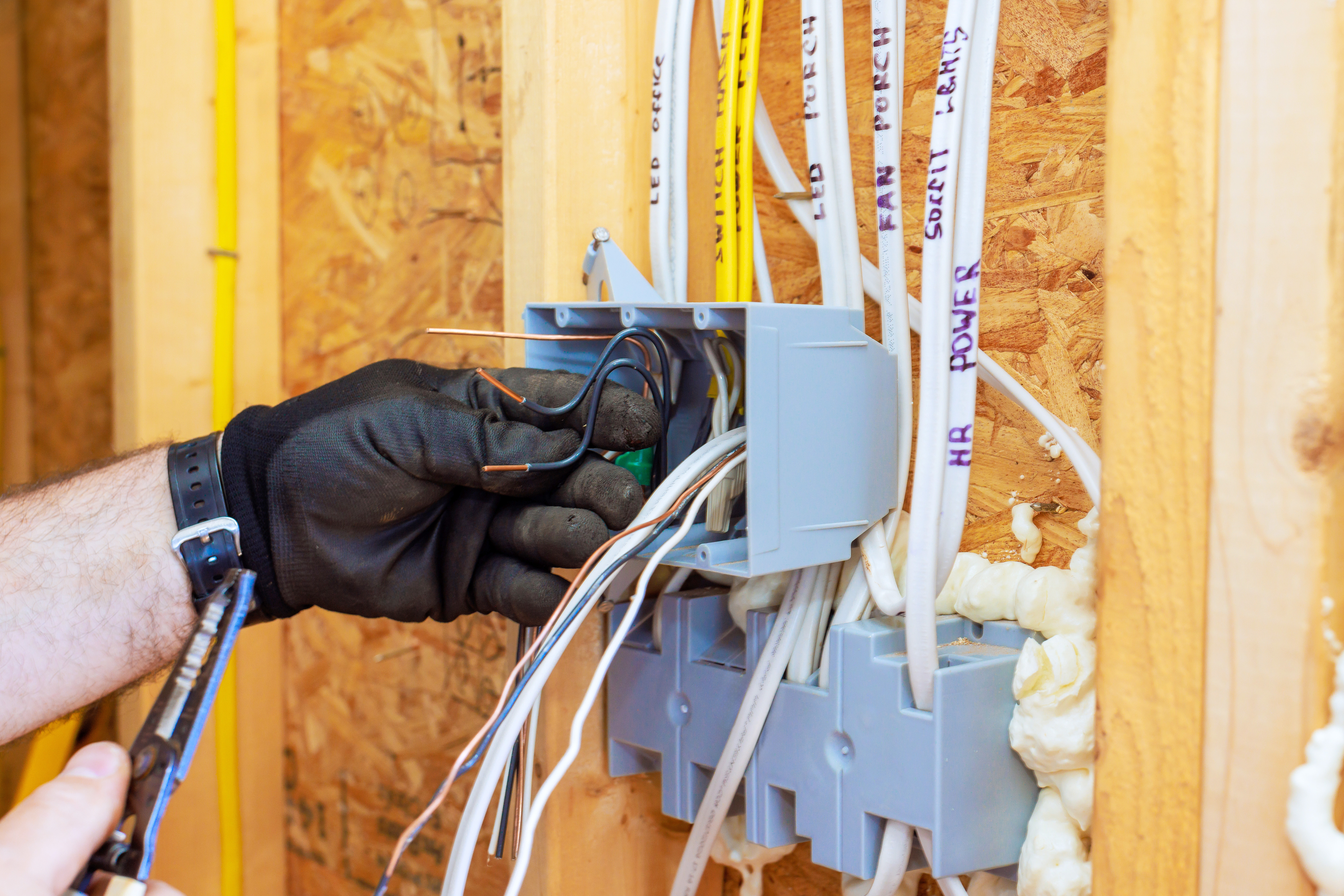
Whether you DIY or go with a pro will determine your ceiling speaker installation cost. Follow this guide to help you budget for your home audio project.
The picture quality on 4K TVs is near perfect, but how does it compare to other TV types?


The “K” in 4K refers to the number of horizontal pixels in a display.
4K TVs have higher resolutions, and clearer pictures, than both UHD and HD TVs.
You can stream most major services with 4K TVs, but 8K TV options are severely limited.
Typically, 4K TVs cost between $500 and $700.
Whether you’re in the market for a birthday present or just want to splurge on your next electronic goodie, 4K TVs may be worth the upgrade.
TVs come with many associated buzzwords that feel overwhelming if you just want to choose the one with the highest TV resolution. Luckily, we’ve broken down all you need to know about 4K TVs below (and why 8K TVs should be on your radar, too), which should help you decide which TV is right for you.
The “K” in 4K stands for “kilo,” which means “one thousand.” Therefore, 4K TVs are units with nearly 4,000 horizontal pixels, or a 4K resolution. Resolution refers to how densely together the pixels (tiny dots) are placed on the screen. The larger the resolution number, the smaller the pixel size. And the smaller the pixels, the clearer the picture.
Altogether, the individual pixels compile the image you see on the screen.
Many use the phrases 4K TV and Ultra HD (Ultra High Definition) interchangeably. But this is not entirely accurate, as the pixel dimensions vary slightly between the two.
If you’re wondering what UHD means, it refers to what consumers see on 4K TV displays. Most UHD TVs are 4K ultra high-definition displays. However, if you see the phrase “cinema” 4K, you’ll get a higher resolution (picture quality).
Finally, traditional Full HD (High Definition) TVs have substantially fewer pixels making up the display, at just 1280 x 720 pixels.
| TV | Resolution |
|---|---|
| HD | 1280 x 720 pixels |
| UHD | 3840 x 2160 pixels |
| 4K | Up to 4096 x 2160 pixels |

Instinct may have you browsing the aisles for 4K models, but 8K TVs actually boast the highest TV resolution. Yes, 8K TVs have hit the market, and they feature twice the resolution: 7680 x 4230 pixels. This means you’ll enjoy a sharper, more detailed picture quality.
That said, you need actual 8K content to get the most out of any 8K TV. And right now, the content available at this quality is very limited. More on this later. And exactly how much of those details your eyeballs actually pick up depends on the distance from your couch to the TV.

Picture quality, while important, comes at a price. Consider your budget when choosing which TV type is best for you. The cost for 4K TVs has dropped over the last few years, but they’re still an investment at around $280. However, most fall between $500 and $700.
On the other hand, 8K TVs are a serious splurge; don’t expect to land one under $2,000. If you’re living in a very small space and looking to pinch pennies, maybe hold off on buying one TV for a bit.
You’ll also need to think about the content available on each type of TV. 4K TVs offer libraries upon libraries of content. Most—but not all—TV service providers offer 4K content, and many new streaming devices support this type. Plus, an upgrade to a 4K TV might also warrant an upgrade in TV size, as this type of high resolution is pointless on a smaller model. The options are even fewer for 8K TVs. Currently, only YouTube and Vimeo offer 8K streaming.
And for many viewers, the content is the most important feature. So before you get too excited, figure out if your must-watch shows are available in 4K or 8K.
From average costs to expert advice, get all the answers you need to get your job done.

Whether you DIY or go with a pro will determine your ceiling speaker installation cost. Follow this guide to help you budget for your home audio project.

Discover the average surround sound installation cost, key price factors, and tips to save. Get expert insights to plan your home audio project.

Find out what impacts TV repair cost. Learn average prices, key cost factors, and how to save when repairing your TV.

Discover the average home theater repair cost, key price factors, and tips to save. Get transparent estimates and plan your repair with confidence.

Discover the cost to install a projector and screen in your home, including price ranges, installation factors, and tips to help you plan your home theater project.

Discover the average cost of home theater wiring, including labor, materials, and key factors that impact your total price. Learn how to budget and save on your project.